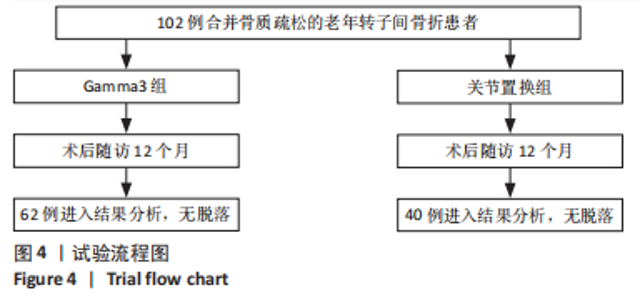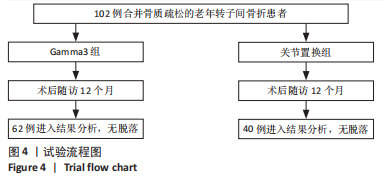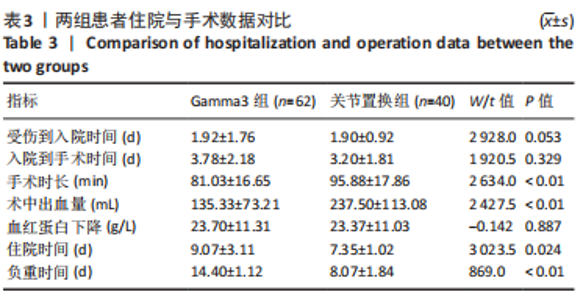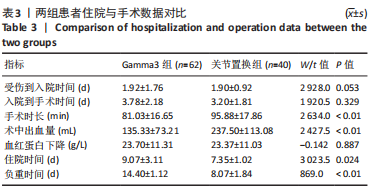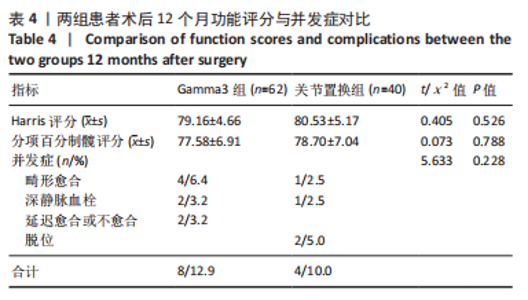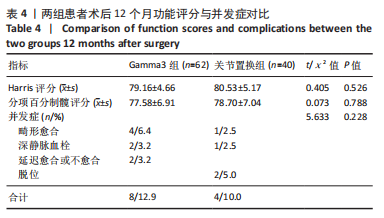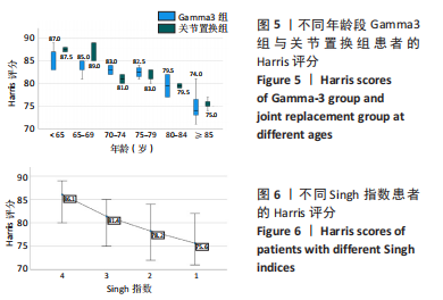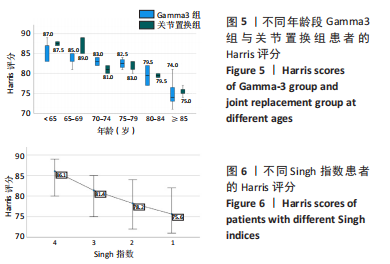Chinese Journal of Tissue Engineering Research ›› 2024, Vol. 28 ›› Issue (12): 1869-1874.doi: 10.12307/2024.023
Previous Articles Next Articles
Efficacy of joint replacement versus closed reduction and internal fixation in treatment of unstable intertrochanteric fractures combined with osteoporosis
Zhu Ruizhi1, Qu Qiang1, Cui Pengfei1, Liu Dong1, Zhang Yongtao2, Wang Changyao2
- 1Department of Medicine, Qingdao University, Qingdao 266071, Shandong Province, China; 2Affiliated Hospital of Qingdao University, Qingdao 266071, Shandong Province, China
-
Received:2022-12-21Accepted:2023-03-06Online:2024-04-28Published:2023-08-22 -
Contact:Wang Changyao, MD, Associate chief physician, Affiliated Hospital of Qingdao University, Qingdao 266071, Shandong Province, China -
About author:Zhu Ruizhi, Master candidate, Department of Medicine, Qingdao University, Qingdao 266071, Shandong Province, China -
Supported by:National Natural Science Foundation of China, No. 81772329 (to WCY)
CLC Number:
Cite this article
Zhu Ruizhi, Qu Qiang, Cui Pengfei, Liu Dong, Zhang Yongtao, Wang Changyao. Efficacy of joint replacement versus closed reduction and internal fixation in treatment of unstable intertrochanteric fractures combined with osteoporosis[J]. Chinese Journal of Tissue Engineering Research, 2024, 28(12): 1869-1874.
share this article
Add to citation manager EndNote|Reference Manager|ProCite|BibTeX|RefWorks
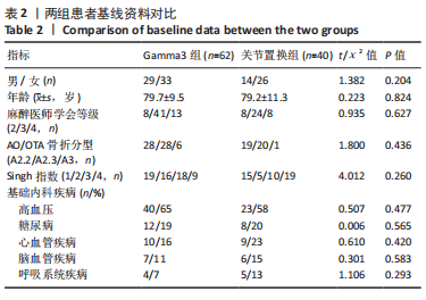
2.3 基线资料比较 102例患者中女58例(56.9%),男44例(43.1%);年龄59-99岁,平均(79.5±10.2)岁;AO/OTA分类均为不稳定型骨折,其中A2.2型 47例(46.1%),A2.3型48例(47.1%),A3型7例(6.9%);62例(48.5%)接受Gamma3髓内钉固定治疗,40例(51.5%)接受关节置换治疗。 患者的基线资料比较如表2所示,在性别方面和骨折时的年龄,两组之间无统计学差异(P=0.204,0.824)。两组患者在ASA分级(P=0.627)、AO/OTA骨折分型(P=0.436)、Singh指数(P=0.260)方面均无统计学差异。两组患者合并基础病情况均无统计学差异(P > 0.05)。"
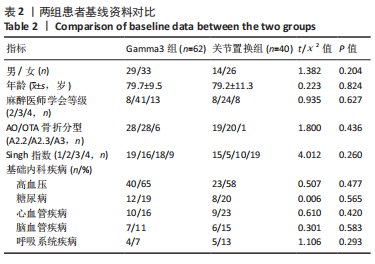
| [1] DHANWAL DK, DENNISON EM, HARVEY NC, et al. Epidemiology of hip fracture: Worldwide geographic variation. Indian J Orthop. 2011;45(1): 15-22. [2] LEWIS SR, MACEY R, PARKER MJ, et al. Arthroplasties for hip fracture in adults. Cochrane Database Syst Rev. 2022;2(2):Cd013410. [3] NIKOLAOU VS, PAPATHANASOPOULOS A, GIANNOUDIS PV. What’s new in the management of proximal femoral fractures? Injury. 2008;39(12): 1309-1318. [4] FICHMAN SG, MäKINEN TJ, SAFIR O, et al. Arthroplasty for unstable pertrochanteric hip fractures may offer a lower re-operation rate as compared to cephalomedullary nailing. Int Orthop. 2016;40(1):15-20. [5] GOTFRIED Y. Integrity of the lateral femoral wall in intertrochanteric hip fractures: an important predictor of a reoperation. J Bone Joint Surg Am. 2007;89(11):2552-2553; author reply 2553. [6] AKAN K, CIFT H, OZKAN K, et al. Effect of osteoporosis on clinical outcomes in intertrochanteric hip fractures treated with a proximal femoral nail. J Int Med Res. 2011;39(3):857-865. [7] LOBO-ESCOLAR A, JOVEN E, IGLESIAS D, et al. Predictive factors for cutting-out in femoral intramedullary nailing. Injury. 2010;41(12): 1312-1316. [8] HAENTJENS P, CASTELEYN PP, OPDECAM P. Hip arthroplasty for failed internal fixation of intertrochanteric and subtrochanteric fractures in the elderly patient. Arch Orthop Trauma Surg. 1994;113(4):222-227. [9] UCPUNAR H, CAMURCU Y, ÇöBDEN A, et al. Comparative evaluation of postoperative health status and functional outcome in patients treated with either proximal femoral nail or hemiarthroplasty for unstable intertrochanteric fracture. J Orthop Surg (Hong Kong). 2019;27(3): 2309499019864426. [10] JU JB, ZHANG PX, JIANG BG. Hip Replacement as Alternative to Intramedullary Nail in Elderly Patients with Unstable Intertrochanteric Fracture: A Systematic Review and Meta-Analysis. Orthop Surg. 2019; 11(5):745-754. [11] SINGH M, NAGRATH AR, MAINI PS. Changes in trabecular pattern of the upper end of the femur as an index of osteoporosis. J Bone Joint Surg Am. 1970;52(3):457-467. [12] 芮敏, 顾家烨, 朱屹, 等. 双动全髋关节在髋关节置换中的应用进展[J]. 中华骨与关节外科杂志,2021,14(8):717-721. [13] 徐又佳, 高焱, 刘功稳. 骨质疏松性髋部骨折的治疗和管理策略[J]. 中国骨质疏松杂志,2019,25(5):585-589. [14] GONG XF, LI XP, ZHANG LX, et al. Current status and distribution of hip fractures among older adults in China. Osteoporos Int. 2021;32(9): 1785-1793. [15] ZHANG C, FENG J, WANG S, et al. Incidence of and trends in hip fracture among adults in urban China: A nationwide retrospective cohort study. PLoS Med. 2020;17(8):e1003180. [16] MARSH JL, SLONGO TF, AGEL J, et al. Fracture and dislocation classification compendium - 2007: Orthopaedic Trauma Association classification, database and outcomes committee. J Orthop Trauma. 2007;21(10 Suppl):S1-S133. [17] ZUCKERMAN JD. Hip fracture. N Engl J Med. 1996;334(23):1519-1525. [18] NIU E, YANG A, HARRIS AH, et al. Clin Orthop Relat Res. 2015;473(11): 3647-3655. [19] LINDSKOG DM, BAUMGAERTNER MR. Unstable intertrochanteric hip fractures in the elderly. J Am Acad Orthop Surg. 2004;12(3):179-190. [20] YANG YH, WANG YR, JIANG SD, et al. Proximal femoral nail antirotation and third-generation Gamma nail: which is a better device for the treatment of intertrochanteric fractures? Singapore Med J. 2013;54(8): 446-450. [21] DOCQUIER PL, MANCHE E, AUTRIQUE JC, et al. Complications associated with gamma nailing. A review of 439 cases. Acta Orthop Belg. 2002;68(3):251-257. [22] 赵晓涛, 张殿英, 郁凯, 等. 股骨近端防旋髓内钉固定治疗股骨转子间骨折的失效原因分析[J]. 中华创伤骨科杂志,2021,23(3):202-208. [23] SIDHU AS, SINGH AP, SINGH AP, et al. Total hip replacement as primary treatment of unstable intertrochanteric fractures in elderly patients. Int Orthop. 2010;34(6):789-792. [24] YOO JI, HA YC, LIM JY, et al. Early Rehabilitation in Elderly after Arthroplasty versus Internal Fixation for Unstable Intertrochanteric Fractures of Femur: Systematic Review and Meta-Analysis. J Korean Med Sci. 2017;32(5):858-867. [25] 吴贵佑, 于前进, 朱红伟, 等. 股骨头置换与内固定治疗高龄不稳定转子间骨折的比较研究[J]. 中国骨伤,2021,34(10):895-900. [26] BONNAIRE F, LEIN T, FüLLING T, et al. Reduced complication rates for unstable trochanteric fractures managed with third-generation nails: Gamma 3 nail versus PFNA. Eur J Trauma Emerg Surg. 2020;46(5):955-962. [27] SHU WB, ZHANG XB, LU HY, et al. Comparison of effects of four treatment methods for unstable intertrochanteric fractures: A network meta-analysis. Int J Surg. 2018;60:173-181. [28] SOCCI AR, CASEMYR NE, LESLIE MP, et al. Implant options for the treatment of intertrochanteric fractures of the hip: rationale, evidence, and recommendations. Bone Joint J. 2017;99-b(1):128-133. [29] HUANG G, ZHANG M, QU Z, et al. Fixation options for reconstruction of the greater trochanter in unstable intertrochanteric fracture with arthroplasty. Medicine (Baltimore). 2021;100(26):e26395. [30] LEE KH, LEE DH, NOH JH, et al. Is rigid fixation of the greater trochanter necessary for arthroplasty of intertrochanteric fractures? Orthop Traumatol Surg Res. 2019;105(1):41-45. [31] TANG P, HU F, SHEN J, et al. Proximal femoral nail antirotation versus hemiarthroplasty: a study for the treatment of intertrochanteric fractures. Injury. 2012;43(6):876-881. [32] LIU XZ, YANG W, YANG SH, et al. Total hip arthroplasty for treatment of elderly patients with comminuted intertrochanteric fracture accompanied by femoral head necrosis. Chin J Traumatol. 2008;11(6): 359-363. [33] TORO G, POLA E, MIRANDA R, et al. Extracapsular femoral neck fractures treated with total hip arthroplasty: identification of a population with better outcomes. Orthop Rev (Pavia). 2022;14(6): 38576. [34] MäKINEN TJ, GUNTON M, FICHMAN SG, et al. Arthroplasty for Pertrochanteric Hip Fractures. Orthop Clin North Am. 2015;46(4):433-444. |
| [1] | Guo Sutong, Feng Dehong, Guo Yu, Wang Ling, Ding Yujian, Liu Yi, Qian Zhengying, Li Mingyang. Construction and finite element analysis of normal and osteoporotic hip models [J]. Chinese Journal of Tissue Engineering Research, 2024, 28(9): 1342-1346. |
| [2] | Zhang Xiaoyun, Liu Hua, Chai Yuan, Chen Feng, Zeng Hao, Gao Zhengang, Huang Yourong. Effect of Yishen Gushu Formula on bone metabolic markers and clinical efficacyn in patients with osteoporosis of kidney deficiency and blood stasis type [J]. Chinese Journal of Tissue Engineering Research, 2024, 28(8): 1155-1160. |
| [3] | Dai Yuexing, Zheng Liqin, Wu Minhui, Li Zhihong, Li Shaobin, Zheng Desheng, Lin Ziling. Effect of vessel number on computational fluid dynamics in vascular networks [J]. Chinese Journal of Tissue Engineering Research, 2024, 28(8): 1206-1210. |
| [4] | Zhang Min, Peng Jing, Zhang Qiang, Chen Dewang. Mechanical properties of L3/4 laminar decompression and intervertebral fusion in elderly osteoporosis patients analyzed by finite element method [J]. Chinese Journal of Tissue Engineering Research, 2024, 28(6): 847-851. |
| [5] | Xue Xiaofeng, Wei Yongkang, Qiao Xiaohong, Du Yuyong, Niu Jianjun, Ren Lixin, Yang Huifeng, Zhang Zhimin, Guo Yuan, Chen Weiyi. Finite element analysis of osteoporosis in proximal femur after cannulated screw fixation for femoral neck fracture [J]. Chinese Journal of Tissue Engineering Research, 2024, 28(6): 862-867. |
| [6] | Kaiyisaier•Abudukelimu, Maimaitimin•Abulimiti, Li Lei, Yang Xiaokai, Zhang Yukun, Liu Shuai. Effect of lumbar CT values in the diagnosis of osteoporosis in women patients with lumbar degenerative diseases [J]. Chinese Journal of Tissue Engineering Research, 2024, 28(6): 945-949. |
| [7] | Wang Liping, Lian Tianxing, Hu Yongrong, Yang Hongsheng, Zeng Zhimou, Liu Hao, Qu Bo. HU value of chest CT vertebral body in the opportunistic screening of type 2 diabetes mellitus osteoporosis [J]. Chinese Journal of Tissue Engineering Research, 2024, 28(6): 950-954. |
| [8] | Yu Zhaoyu, Tan Lixin, Sun Kai, Lu Yao, Li Yong. Meta-analysis of cement-augmented pedicle screw for thoracolumbar degenerative diseases with osteoporosis [J]. Chinese Journal of Tissue Engineering Research, 2024, 28(5): 813-820. |
| [9] | Wei Yuanxun, Chen Feng, Lin Zonghan, Zhang Chi, Pan Chengzhen, Wei Zongbo. The mechanism of Notch signaling pathway in osteoporosis and its prevention and treatment with traditional Chinese medicine [J]. Chinese Journal of Tissue Engineering Research, 2024, 28(4): 587-593. |
| [10] | Abuduwupuer·Haibier, Alimujiang·Yusufu, Maihemuti·Yakufu, Maimaitimin·Abulimiti, Tuerhongjiang·Abudurexiti. Meta-analysis of efficacy and safety of terlipatide and bisphosphate in the treatment of postmenopausal osteoporosis fractures [J]. Chinese Journal of Tissue Engineering Research, 2024, 28(4): 639-645. |
| [11] | Yin Linwei, Huang Xiarong, Qu Mengjian, Yang Lu, Wang Jinling, Jia Feiyang, Liao Yang, Zhou Jun. Effects of treadmill exercise on osteoporosis and wnt/beta-catenin signal pathway in aged rats [J]. Chinese Journal of Tissue Engineering Research, 2024, 28(2): 231-236. |
| [12] | Zhang Jingtao, Hu Minhua, Liu Shitao, Li Shuyuan, Jiang Zexin, Zeng Wenxing, Ma Luyao, Zhou Qishi. Regularity and mechanism of traditional Chinese medicine compound prescriptions in the treatment of primary osteoporosis [J]. Chinese Journal of Tissue Engineering Research, 2024, 28(16): 2555-2560. |
| [13] | Chai Shuang, Ma Jiangtao, Yang Yanbing, Su Xiaochuan, Xie Yan, Teng Junyan, Qin Na. The role and mechanism of estrogen receptor in the treatment of postmenopausal osteoporosis by Gushukang [J]. Chinese Journal of Tissue Engineering Research, 2024, 28(16): 2574-2578. |
| [14] | Xie Heng, Gu Ye, Gu Yingchu, Wu Zerui, Fang Tao, Wang Qiufei, Peng Yuqin, Geng Dechun, Xu Yaozeng. Ferroptosis in bone diseases: therapeutic targets of osteoporosis [J]. Chinese Journal of Tissue Engineering Research, 2024, 28(16): 2613-2618. |
| [15] | Huang Huimin, Xie Bingying, Huang Jingwen, Huang Xiaobin, Xie Lihua, Li Shengqiang, Ge Jirong. Protective mechanism of alendronate granule in a rat osteoporosis model based on TMT proteomic analysis [J]. Chinese Journal of Tissue Engineering Research, 2024, 28(16): 2505-2511. |
| Viewed | ||||||
|
Full text |
|
|||||
|
Abstract |
|
|||||
